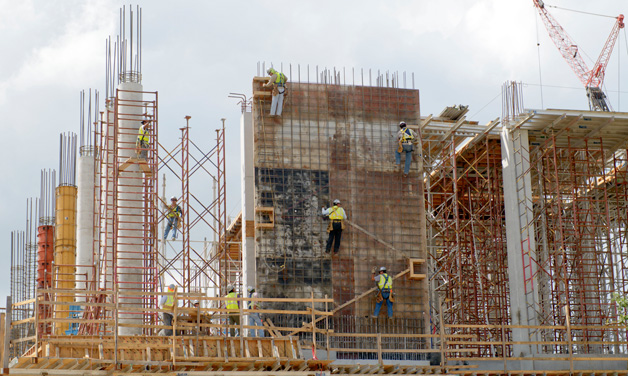
The 21st Century VA Hospital
The Department of Veterans Affairs had not built a new medical center since the mid-1990s, when the West Palm Beach, Fla., facility was completed. Over the last decade, four have been simultaneously under construction. Three are the offspring of the 2004 Capital Asset Realignment for Enhanced Services (CARES) report that addressed shifting veteran populations, billions spent on unnecessary physical space, and an inventory of facilities that averaged over 50 years each in age and had fallen out of step with modern medicine. The fourth project was born of a different emergency: Hurricane Katrina.
The projects – Las Vegas, Orlando, New Orleans and Denver – are designed, intended and built to be state-of-the-art, technologically advanced, veteran-centric, highly efficient, environmentally friendly and, most prominent, to offer the highest quality of care possible for veterans. VA Associate Director for Facility Programs and Plans Dennis Milsten, when asked if these are going to be the best hospitals in America, he replies: “Yes, but I would have to preface that, ‘For a while.’”
The projects have taken longer, cost more and encountered more obstacles than anyone expected.
Rep. Jeff Miller, R-Fla., chairman of the House Committee on Veterans’ Affairs, called for a Government Accountability Office (GAO) report last year to find out why the projects were so delayed and beyond their original cost estimates. Based on research collected in November 2012, the GAO reported that the four medical centers were each, on average, $366 million over initial cost estimates and, on average, 35 months delayed. To date, only Las Vegas is considered built, although all of its eventual services are not yet available.
“We recognize that some cost increases and schedule delays result from factors beyond VA’s control,” GAO Director of Physical Infrastructre Lorelei St. James reported to Congress last May. “Our review of VA’s largest projects also indicated weaknesses in VA’s construction-management processes also contributed to cost increases and schedule delays.”
Among reasons the medical centers have slowly struggled to life, according to GAO, are:
-Changing health-care needs and patient demand in their service areas.
-Decisions to build stand-alone hospitals rather than shared facilities with university med schools.
-Debate over where to physically locate the hospitals in their local communities.
-Natural problems such as uneven soil settling in New Orleans and a high water table in Denver that forced continuous pumping of water from the site.
Conflicts between VA and contractors in Denver and Orlando have included at least two cure notices in Florida and a lawsuit in Colorado, generally over changes in plans that VA describes as normal but contractors would describe as flaws.
Fast-changing medical technology and patient-treatment programs, along with the arrival of new patients with unique needs from the wars in Iraq and Afghanistan, have had an effect on the pace of the projects. The GAO and VA both agree that better use of medical equipment planners – early, often and throughout the process – can help VA stay in front of medical and technological changes. Communication and relationship building have proven more effective in New Orleans and Las Vegas than Orlando and Denver. VA has argued that initial cost estimates for hospitals not yet designed, that may take years to finish, are inherently skewed. In the case of Orlando, the site of construction changed three times between initial estimates and the first blueprints.
While veterans have shown patience, anticipating world-class medical centers, Miller is not happy about the cost overruns and delays, especially with one of the hospitals in his state. “My single interest is the expeditious completion of this facility for the veterans of central Florida, who have been waiting over a decade for this medical center,” Miller said at an August 2012 hearing in an auditorium next door to the VA facility that stood at least a year and a half away from completion, already more than two years past due.
Milsten says the past decade has provided lessons. “If there is one lesson learned that we took out of these four projects, and a significant number of others, is we don’t announce to the world what it’s going to cost and when we’re going to be done until we have done all the preliminary engineering, the basic concept of design, and have estimates based on signficant interaction between the designer and the user, and between the designer and the engineers, so we can advance the project.”
Go to legion.org/vahospitals to see more of The American Legion special report on VA Health Care.
